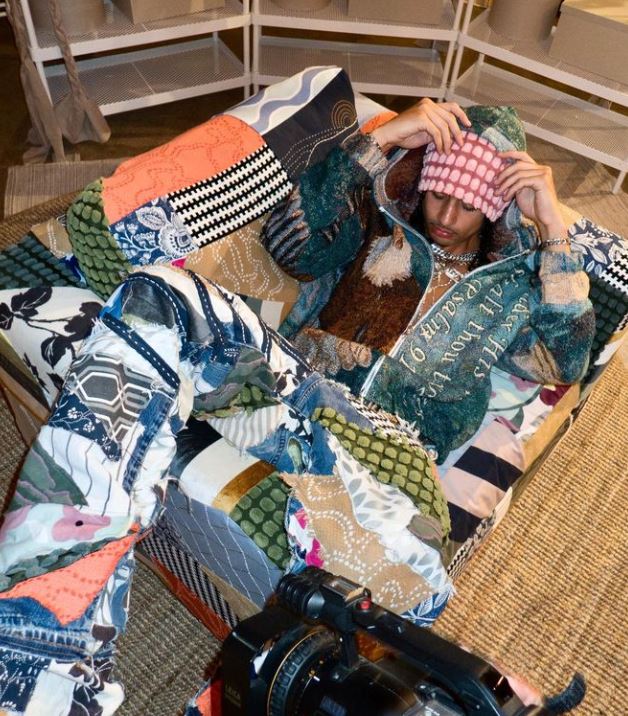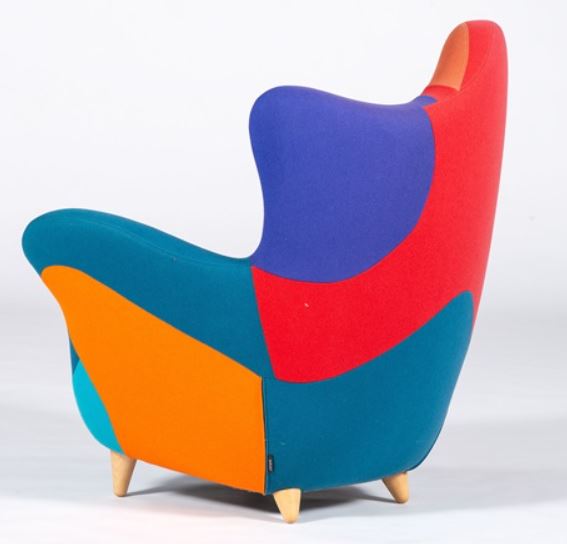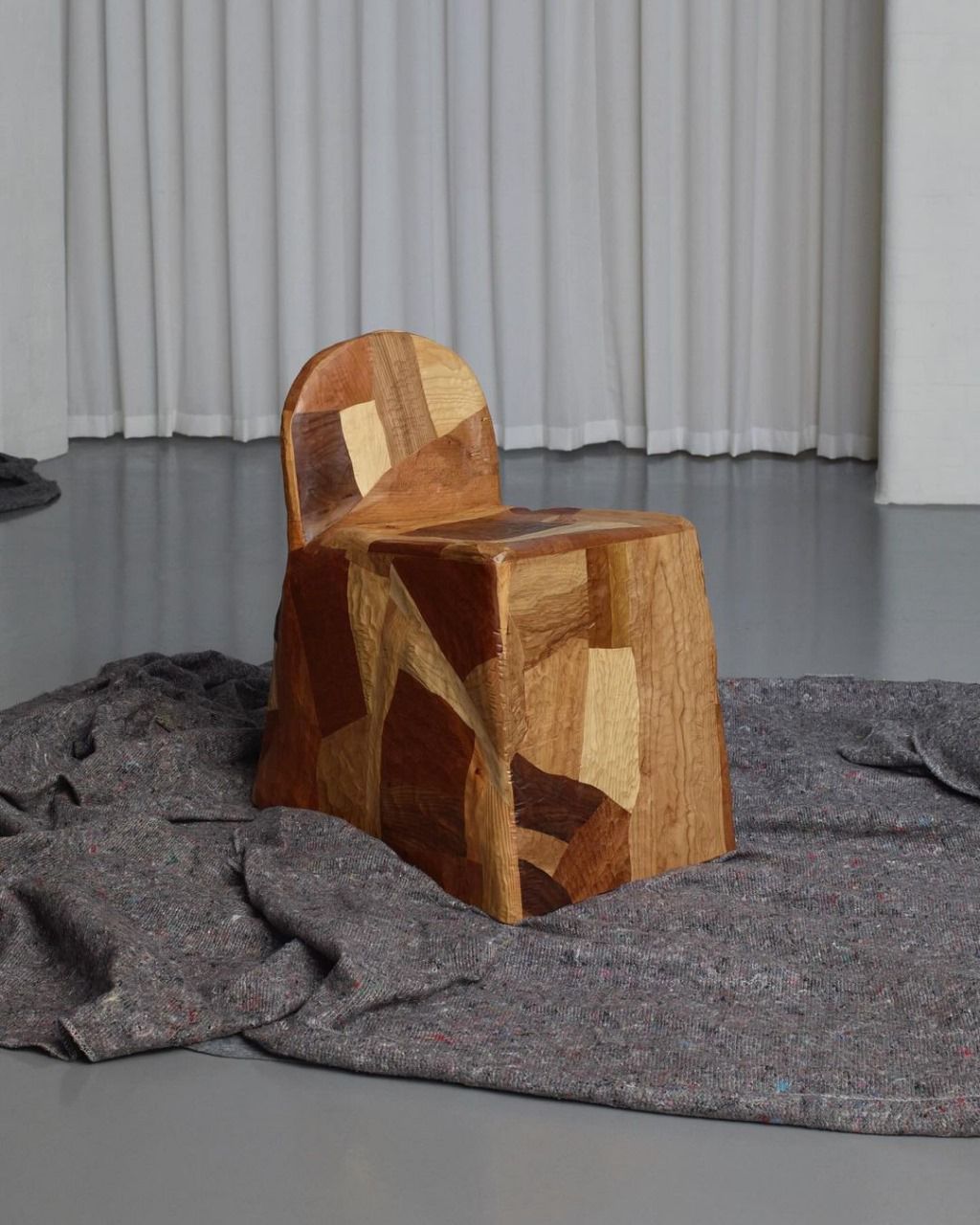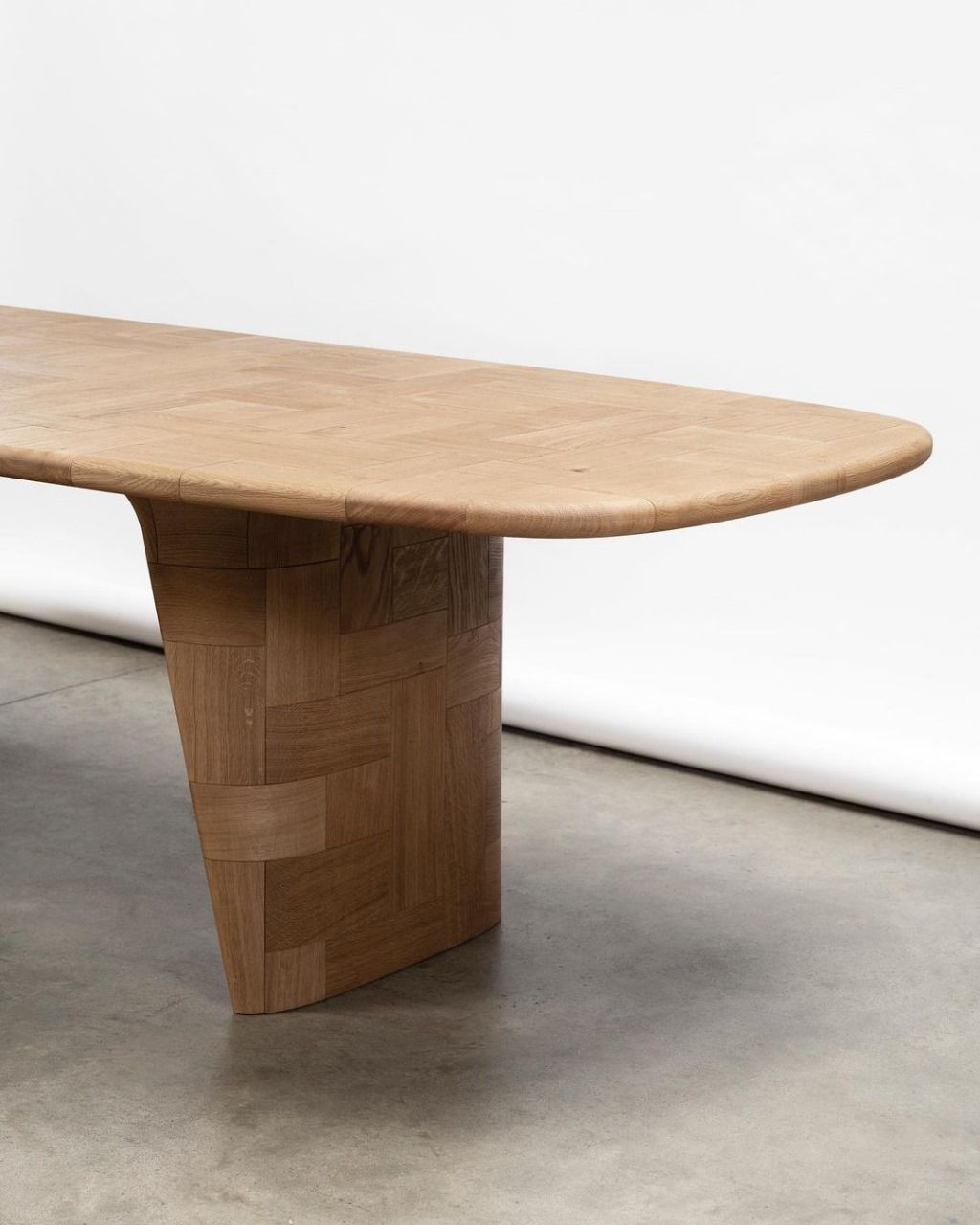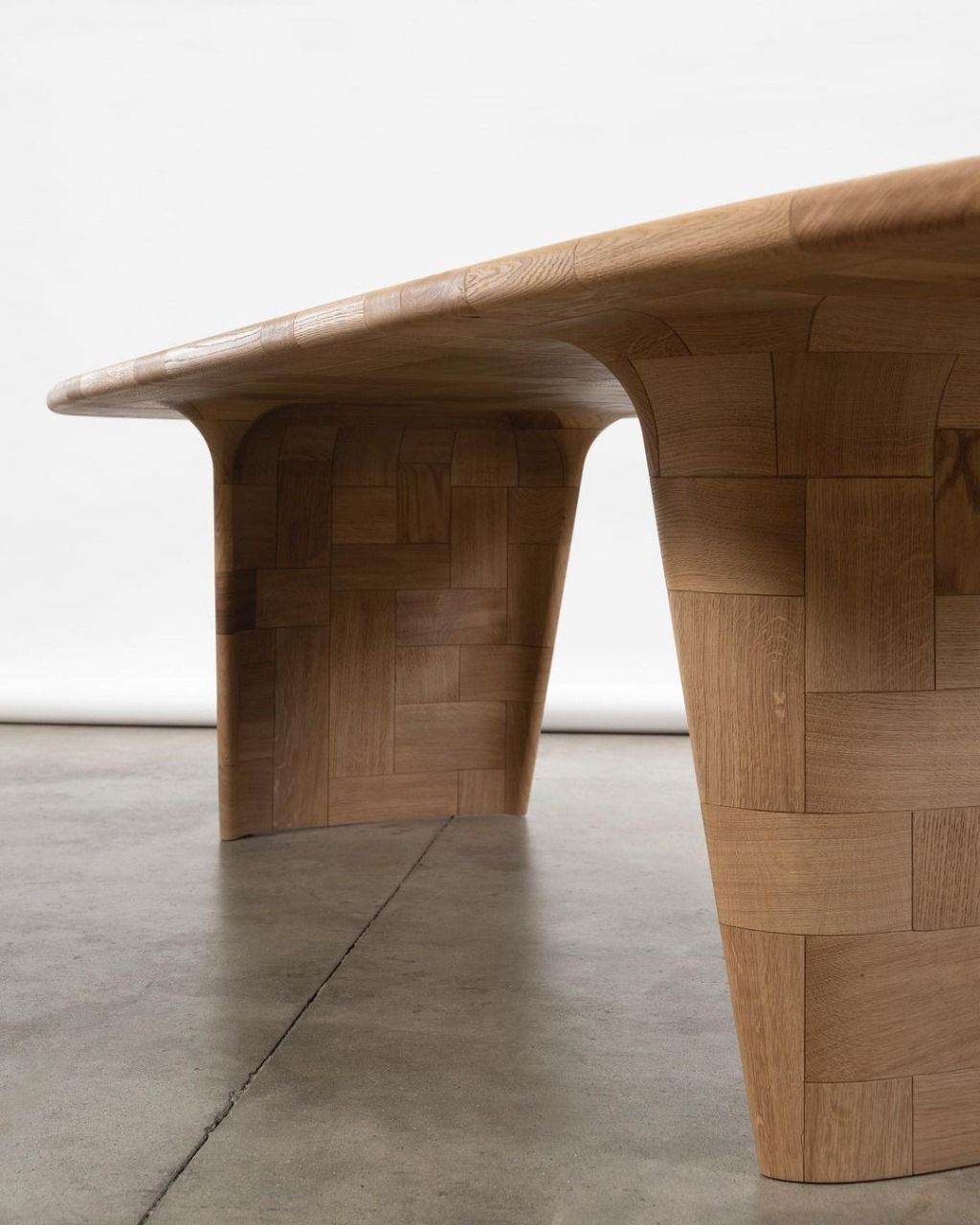Patchwork, a centuries-old technique traditionally associated with quilting and textile crafts, has found a vibrant and innovative place in modern furniture design. This creative approach involves combining various fabric pieces, often of different colors, patterns, and textures, to create a cohesive and visually striking design. The result is furniture that not only stands out aesthetically but also tells a story through its unique assembly.
A Brief History of Patchwork
Patchwork as a technique dates back to ancient times, with its origins often traced to early civilizations. The earliest known examples of patchwork can be found in Egyptian tombs dating back to around 980 BC, where small pieces of colored fabric were sewn together to create decorative and functional items. The technique was also used in China around the 5th century BC. Throughout history, patchwork has been utilized in various cultures, primarily as a practical method to make use of leftover or worn-out fabrics to create quilts, clothing, and other household items. It evolved over time into an art form, celebrated for its intricate designs and the creativity involved in combining different patterns and textures.
Patchwork has its roots in the necessity of using fabric scraps to create functional items like quilts, blankets, and clothing. Over time, this practical technique evolved into a respected art form, celebrated for its intricate designs and cultural significance. Each patchwork piece carries a history, reflecting the skill and creativity of its maker. In the context of furniture design, patchwork brings a rich tradition of craftsmanship and personalization to contemporary interiors.
The Modern Revival
In recent years, patchwork has experienced a resurgence in popularity among designers and homeowners alike. This revival is driven by a growing appreciation for artisanal craftsmanship and sustainable practices. Patchwork furniture, with its eclectic mix of fabrics and patterns, offers a fresh and dynamic alternative to mass-produced items. It allows for the incorporation of recycled materials, making it an eco-friendly choice that aligns with the values of conscious consumers.
Nigel Xavier is a contemporary designer celebrated for his innovative approach to patchwork in furniture design. Known for his meticulous craftsmanship and vibrant use of color, Xavier seamlessly blends traditional patchwork techniques with modern aesthetics. His work features a diverse array of fabrics and patterns, creating pieces that are both visually striking and rich in texture. Nigel Xavier’s designs not only highlight his artistic creativity but also reflect a commitment to sustainability, often utilizing recycled materials. Through his unique approach, Xavier has revitalized patchwork, transforming it into a sophisticated art form that resonates in the world of modern furniture design. Nigel is a designer who has gained recognition not only for his unique approach to patchwork but also for his appearance on reality television. As a contestant on Netflix’s reality competition series “Next in Fashion,” Nigel showcased his innovative design skills and creative vision to a global audience. The show, which features talented designers competing to create fashion-forward garments, provided Nigel with a platform to demonstrate his expertise in combining various fabrics and patterns in striking and original ways. His participation in “Next in Fashion” brought further attention to his work and highlighted his ability to merge traditional craftsmanship with contemporary design. Through his reality TV presence, Nigel Xavier has continued to influence and inspire the world of modern fashion and furniture design.
Benefits of Patchwork Furniture
- Uniqueness and Personalization Each piece of patchwork furniture is a one-of-a-kind creation. The combination of different fabrics ensures that no two items are exactly alike, giving homeowners a unique statement piece that reflects their personal style.
- Sustainability Patchwork design promotes the use of leftover or recycled fabrics, reducing waste and supporting sustainable practices. This eco-friendly approach appeals to those looking to make environmentally conscious choices in their home decor.
- Versatility The diverse range of colors, textures, and patterns in patchwork furniture makes it highly versatile. Whether placed in a minimalist, bohemian, or eclectic interior, patchwork pieces can add a touch of creativity and warmth to any space.
- Craftsmanship Creating patchwork furniture requires a high level of skill and attention to detail. The artisanal nature of this technique ensures that each piece is meticulously crafted, showcasing the dedication and talent of the designer.
Incorporating Patchwork into Your Home
Patchwork furniture can be a bold addition to your home decor, providing a focal point and injecting personality into a room. Here are some tips on how to incorporate patchwork pieces into your interior design:
- Accent Chairs: A patchwork accent chair can add a pop of color and interest to a neutral living room or bedroom. Pair it with solid-colored cushions and throws to balance the look.
- Sofas and Sectionals: For a more dramatic impact, consider a patchwork sofa or sectional. These pieces can anchor a space and become a conversation starter. Keep the surrounding decor simple to let the sofa take center stage.
- Ottomans and Footstools: Smaller patchwork items like ottomans and footstools are perfect for adding a touch of patchwork without overwhelming the space. They can be used in living rooms, bedrooms, or even as extra seating in an entryway.
- Patchwork Accessories: If you’re not ready to commit to large furniture pieces, patchwork accessories such as cushions, throws, and wall hangings can introduce the style subtly and effectively.
Patchwork Woodwork: A Fusion of Tradition and Innovation
Patchwork woodwork is an innovative design approach that brings the traditional patchwork technique, typically associated with textiles, into the realm of woodworking. This method involves combining pieces of wood with different colors, grains, and textures to create a cohesive and visually striking design. The result is furniture and decor that are not only functional but also unique works of art.
The Art of Patchwork Woodwork
Patchwork woodwork involves meticulous craftsmanship and an eye for detail. Here’s how it’s typically done:
- Selection of Wood Pieces: Different types of wood are selected for their color, grain, and texture. Common choices include walnut, oak, cherry, maple, and exotic woods like zebrawood or rosewood.
- Cutting and Shaping: The wood pieces are cut into various shapes and sizes, depending on the design. Precision is crucial to ensure that the pieces fit together seamlessly.
- Assembly: The cut pieces are carefully assembled like a puzzle, creating intricate patterns and designs. This step requires skill and patience to ensure that the joints are tight and the surface is smooth.
- Finishing: Once assembled, the patchwork piece is sanded and finished to enhance the natural beauty of the wood. Finishes can range from natural oils and waxes to lacquers and varnishes, depending on the desired look and durability.
- Sustainability: Patchwork in woodwork exemplifies sustainability by creatively repurposing different wood pieces, reducing waste, and transforming them into unique, artistic furniture.
Benefits of Patchwork Woodwork
- Aesthetic Appeal: The combination of different woods creates a visually stunning effect that highlights the natural beauty of each type of wood.
- Uniqueness: Each patchwork wood piece is one-of-a-kind, making it a unique addition to any home or space.
- Sustainability: Using smaller pieces of wood that might otherwise go to waste makes patchwork woodwork an eco-friendly choice.
Applications in Furniture Design
Patchwork woodwork can be applied to various types of furniture and decor, including:
- Tables: Dining tables, coffee tables, and side tables can feature patchwork designs on their tops or bases.
- Cabinets and Dressers: Patchwork wood panels can be used on the fronts of cabinets and dressers, adding an artistic touch to functional pieces.
- Chairs and Benches: Seats and backs of chairs and benches can incorporate patchwork elements for added visual interest
Conclusion
Patchwork furniture brings a blend of tradition, craftsmanship, and modernity to interior design. Its unique aesthetic and sustainable nature make it a compelling choice for those looking to create a personalized and environmentally conscious home. Whether you’re drawn to the vibrant colors and patterns or the rich history behind the technique, incorporating patchwork into your decor can transform your living space into a work of art and the patchwork woodwork is a creative and innovative approach that blends traditional craftsmanship with modern design sensibilities. By combining different types of wood into cohesive and intricate designs, this technique creates furniture and decor that are not only functional but also uniquely beautiful. Whether used in tables, cabinets, or wall art, patchwork woodwork adds a touch of artistry and sustainability to any space.




